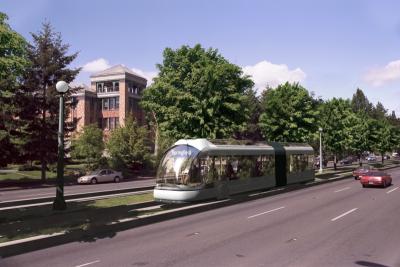APTA has put out another report that misleadingly claims that transit saves money and energy. While it is not surprising that APTA would try to mislead the public, the sad thing is that many planners and planning advocates will believe, or pretend to believe, the report.
-
Recent Posts
- Amtrak Ridership Up in September
- SF Muni Tries Washington Monument Strategy
- City Auditor: Vision Zero Doesn’t Work
- Memo to Musk & Ramaswamy: Incentives Count!
- September Driving 2.25% More Than in 2019
- September Transit Ridership 76.3% of 2019
- NM’s Rail Runner Is “Financially Healthy”?
- The Dangers of Bus Rapid Transit
- The Value of Single-Family Neighborhoods
- August Driving Nearly 103% of Pre-Pandemic Miles
Calendar
Categories
- Book reviews (59)
- City planning (122)
- Entrepreneurs (17)
- Fish & wildlife (10)
- Follow up (119)
- Housekeeping (203)
- Housing (281)
- Iconoclast (50)
- Meltdown (28)
- Mission (80)
- News commentary (945)
- Planning Disasters (95)
- Policy brief (147)
- Public lands (69)
- Regional planning (313)
- Transportation (2,486)
- Travels (35)
- Urban areas (368)
- Useful Data (249)
- Why Planning Fails (33)
- Wildfire (61)
Tags
airlines Amtrak Austin automobiles bicycles bus-rapid transit bus transit California commuter rail congestion Denver driverless cars energy heavy rail high-speed rail highways Honolulu housing housing affordability infrastructure intercity bus intercity passenger trains intercity rail light-rail transit light rail Los Angeles low-capacity rail New York New York City Portland rail transit reauthorization San Antonio San Francisco San Francisco Bay Area Seattle self-driving cars streetcar streetcars tax-increment financing transit transit-oriented development Twin Cities Washington Washington DCFaithful Allies
- American Dream Coalition Protecting freedom, mobility, and affordable homeownership
- California Chaparral Institute Defends natural management of Southern California forests
- Debunking Portland Portland has become a PR machine for the Light Rail & Streetcar industry. We are telling the other side
- Demographia Wendell Cox’s compilation and review of population data
- Public Purpose Wendell Cox’s compilation and review of transport data
- Reason Foundation Supporter of improved urban transportation
- Save Portland Documents subsidies to Portland transit-oriented developments
Loyal Opponents
- American Planning Association Voice of the urban planning profession
- American Public Transportation Association Lobby group for the transit industry
- Market Urbanism Smart-growth advocates in a free-market guise
- The Public Transit blog Reasonable (for a rail-transit advocate) analysis of transit data
- Victoria Transport Policy Institute Promotes rail transit & smart growth
Popular Blogs
- Prepare for Wildfire How to make your home firewise
- Streamliner Memories The Antiplanner’s blog about the history of American passenger trains
Useful Data
- Highway Statistics US DOT’s annual compilation of highway data
- Home price comparison index Coldwell Banker’s annual estimate of the value of similar homes in more than 300 cities
- House Price Index Department of Commerce’s quarterly compilation of changes in housing prices
- National Transit Database US DOT’s annual compilation of transit data
- National Transportation Statistics US DOT’s annual compilation of transportation data
- Transit Database Visualization Graphs of the National Transit Database showing ridership trends by agency and mode.
Meta
The Antiplanner’s Other Blog: Streamliner Memories
Antiplanning Books








